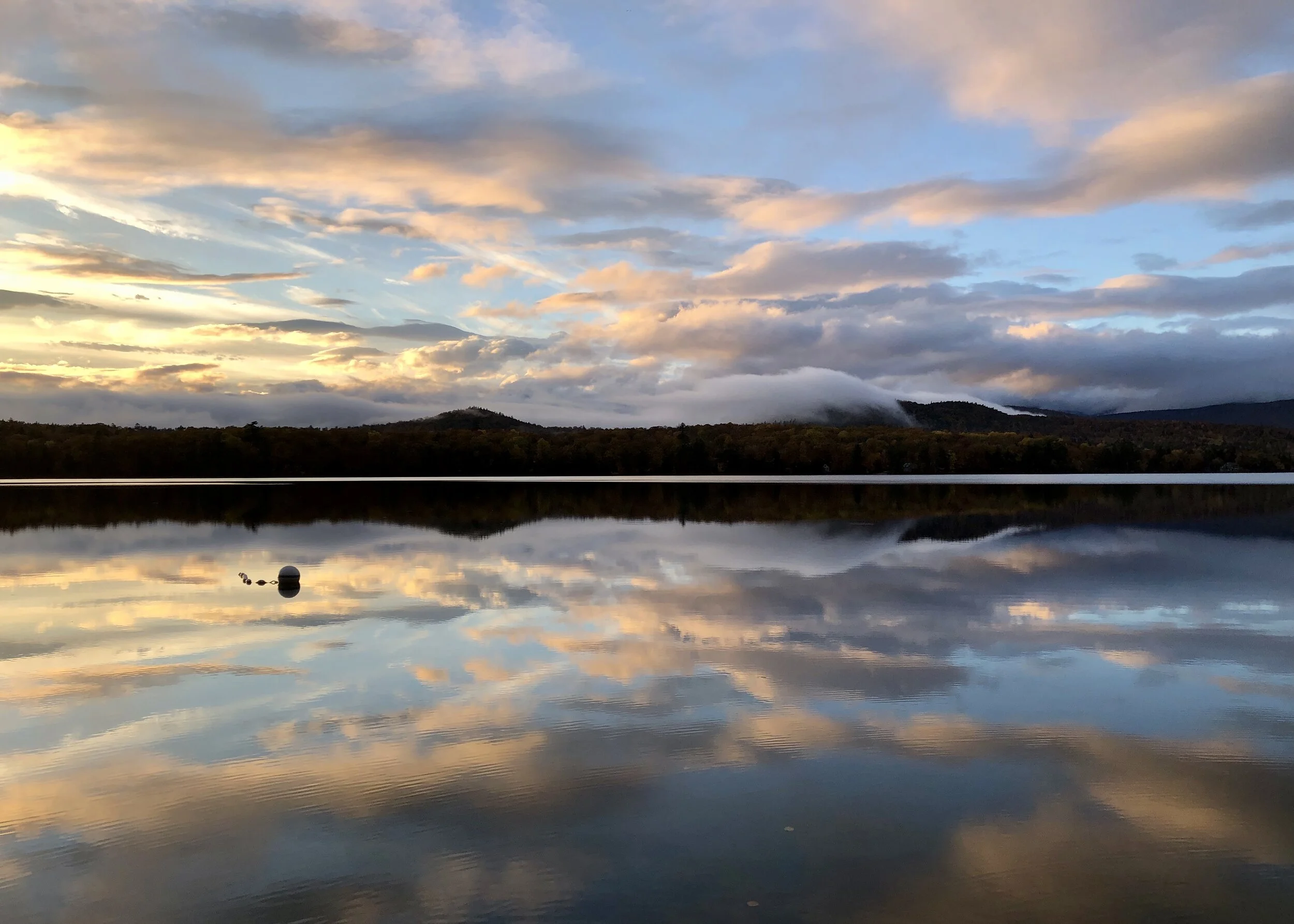Monitoring our Diverse Species of Fish
The health of our local fisheries is a top concern for KLWA. We work closely with the Maine Department of Inland Fisheries & Wildlife (IFW) and the White Mountain National Forest (WMNF) to keep track of local fish populations, with particular focus on Landlocked Salmon, Lake Trout (aka Togue), Brook Trout, Smallmouth Bass and Largemouth Bass.
Landlocked Salmon
IFW is managing Kezar Lake as a quality Landlocked Salmon fishery and trap nets fish every other year to monitor salmon size and population trends. Salmon numbers and sizes are down which is likely the result of a decline in forage fish. The salmon compete with Lake Trout for their favorite food, Rainbow Smelt, so IFW has increased the bag limit for Lake Trout in an effort to reduce that stress on salmon. Winter ice-fishing is also likely impacting salmon numbers. Nevertheless, Kezar remains one of the top four salmon waters in the region. IFW continues to stock Kezar with salmon annually at a rate of approximately one salmon per three surface acres. That amounts to approximately 400 seven-inch Landlocked Salmon stocked each spring. For the Inland Fisheries and Wildlife 2021 report on Landlocked Salmon in Kezar Lake, click here.
Lake Trout
IFW data on Lake Trout shows that population to be within the density and size range observed for other Maine lakes. They recently conducted a two-year (2020/21) Lake Trout assessment on Kezar. That report is still pending and we will post it as soon as it becomes available. Lake Trout have not been stocked in Kezar since 2001.
It is important to note that some Kezar Lake salmon spawn in both Boulder Brook and Great Brook. It is an amazing sight to view these majestic fish creating their spawning beds (aka redds) in our small streams and emphasizes the importance of maintaining the health of those waters. The salmon spawn in late October or November, moving upstream, generally, after a heavy rain. The young often stay in the streams for 1-2 years. Historically, and over a period of years in anticipation of the Albany South timber harvesting project, KLWA hired Stantec to document the spawning beds. A 2014 Spawner Summary Report can be viewed here.
Bass
In response to KLWA member concern about Kezar Lake bass populations, IFW conducted a bass survey in 2021 and compared it to a baseline survey conducted about ten years earlier. Data analysis shows no notable changes in the largemouth or smallmouth fisheries over the past decade based on IFW electrofishing data. A report of those results will be posted as soon as they become available. Kezar continues to be a popular destination for fishing tournaments which are scheduled by IFW through a lottery system.
Native Brook Trout
KLWA has worked with the White Mountain National Forest to monitor native Brook Trout populations in local streams. Though the trout are small, the population is doing well. The WMNF monitors those populations most years. A 2018/19 report can be viewed here.
KLWA has also have evaluated Cold Brook for its quality as Brook Trout habitat. This was in anticipation of possible stream degradation around Evergreen Valley. That concern has been resolved, but the report still has relevance and can be viewed here.
Our fisheries are stable because of the health of our waters. Thank you for helping KLWA keep it that way!
A further note to all fisher-folk:
Please be conscientious about your tackle. Abandoned tackle and/or monofilament line can be lethal for waterfowl and aquatic critters.
Lead tackle is the number one cause of loon deaths in New England.
Ingestion of just one lead sinker is lethal for an adult loon. Lead sinkers are mistaken for the pebbles loons consume to aid digestion, and may also be ingested when a loon consumes a released fish containing a lead jig. All of these create toxic hazards that linger in our lakes indefinitely.
We encourage you to read the article in our Fall 2022 Newsletter about a loon dying of lead poison and its chick being entangled by a treble hook.
Please help remove lead from the lake. Whether you spy monofilament tangled in a bush, a stray lure on the lake bottom, or potential lead in your own tackle box, please dispose of it properly. You can place it in one of our new lead tackle collection boxes in the lobby of the Lovell Town Office or Charlotte Hobbs Memorial Library, or call us at 207.925.8020. We’ll come pick it up at your door.
Do you need some help telling what’s what? Give us a call and we will have a look with you.
Have fun fishing, but please keep our waters safe!
For more information of fishing and for fishing regulations, please visit the Maine Department of Inland Fisheries & Wildlife www.maine.gov/ifw/fishing-boating/fishing/index.html
Thank you!

